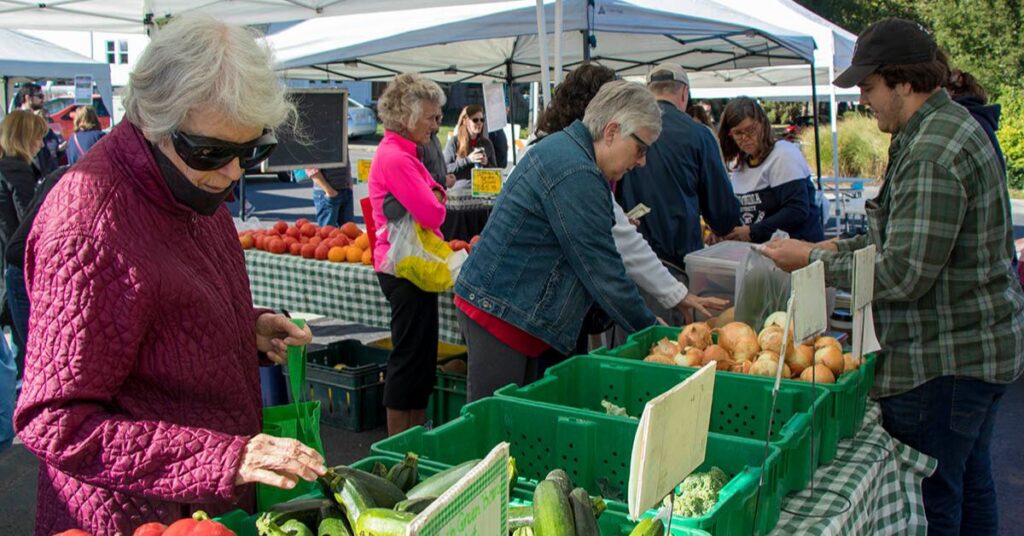I understand if your roof is leaking, your porch steps are rotting, or your heat doesn’t function very well anymore. It might be hard to keep up with home repairs when you have a low income.
But most people don’t know this: there are government programs that can help seniors solve these problems for free or virtually nothing. You just need to know where to look, who can get it, and how to apply.
In this guide, I’ll show you actual programs that can help you, not scams or “maybe” grants. These are official federal, state, and nonprofit assistance systems that can help you with everything from changing unsafe wiring to putting in grab bars and ramps for safety.
The best part? If you’re 62 or older and fulfill the income requirements, several of these programs will provide you up to $10,000 in free grants that you don’t have to pay back.
So keep reading if your house is falling apart and you don’t know what to do. There is aid out there, and it’s easier to get than you think.
Before we go into the programs, let’s quickly talk about who can get them and why so many individuals lose out even if they can.
Who Qualifies for Free Government Repairs
People often think that getting aid from the government to fix things is hard or just for people who are very poor. But that’s not the case.
If you’re 62 or older, own your home, and your income falls below a particular level, you might already qualify—especially through programs like the USDA Section 504 grant or other local services.
Most programs search for the following:
- Age: Many government programs are only for people 62 and older. Some programs in the area start at 60.
- Homeownership: You must own and reside in the home that needs repairs in order to be a homeowner. Most of the time, rental homes don’t count.
- Income limits: These depend on where you live, but most say you can’t make more than half of your county’s median income. In a rural county, for instance, that could represent $25,000 to $30,000 a year for one person.
- Location: Some programs, like USDA’s, only work if you live in a rural location. But the word “rural” can mean a lot of things. Even towns that aren’t very big can qualify.
A lot of folks miss out here. They think they aren’t “rural enough” or make “too much,” yet the rules for who can apply aren’t always as tough as they seem. A lot of homeowners qualify but never apply.
If you’re not sure, don’t make a guess. You can check the USDA’s property eligibility checker or call your local housing authority. One phone call might get you thousands of dollars in free support.

Next, I’ll explain the key federal program that most seniors don’t know about and how it might pay for up to $10,000 in house repairs.
Also, if your income comes from disability or retirement, you might want to look into Social Security disability benefits you may already qualify for—this could impact your eligibility or help boost your support.
The USDA Section 504 Program – What It Covers and How It Works
One of the most powerful but least-known programs for seniors living in rural regions is the USDA Section 504 Home Repair Program. If you’re over 62 and your income is below a certain level, you could be able to earn a grant of up to $10,000 to remedy important safety problems in your house.
This is how it works:
- Grants (for people over 62): Up to $10,000 to address health or safety problems, such as a leaking roof, bad wiring, or adding handrails.
- Loans for people of all ages: You can borrow up to $40,000 at a low interest rate of 1% and pay it back over 20 years. These can pay for big repairs like fixing the plumbing, the heating, or the foundation.
- Combo option: Seniors may be able to get both the grant and the loan at the same time, depending on how much the repairs cost and whether they meet the requirements.
The USDA Rural Development offices in your area run this program, but the federal government pays for it. That implies that the regulations are the same for everyone, but the aid comes from people in your region who know your community.
Another thing to keep in mind is that you might have to pay back some or all of the grant money if you sell your property within three years of getting it. But if you plan to stay, which most seniors do, it’s basically free money to keep your house secure and livable.
A lot of homeowners don’t apply because they think “rural” means farming. But look at the map. The USDA’s definition of “rural” encompasses small towns, suburbs, and even parts of cities that are on the edge of them.
Want to see whether your home qualifies? You can find out if you are eligible by going to the USDA eligibility map.
Next, I’ll teach you exactly how to apply and what mistakes individuals often make that might slow down or even cancel their application.
How to Apply for the USDA Program (Without Getting Stuck)
Getting help from the government might feel like a maze because there is too much paperwork, stages that aren’t obvious, and long waits. But if you know what to anticipate, the USDA repair program is surprisingly easy to use.
Here’s a step-by-step guide:
1. Find the USDA office near you
Visit the USDA Service Center Locator and type in your zip code. You’ll get the phone number for the office that oversees your area.
2. Get the Application Packet
You can either get it from the USDA website or ask for it to be sent to you. It has forms for income, property, and repair information.
3. Get These Papers
- Proof of age (such a birth certificate or ID)
- Documents that show you own a home (deed or mortgage papers)
- Proof of income, like tax records or a Social Security statement
- Pictures or estimations of the work that needs to be done
4. Tell us what needs to be fixed Clearly
Say things like “Roof leaks when it rains” and “Bathroom floor is soft and dangerous” in straightforward words. USDA staff don’t want sophisticated jargon; they just need to know about the safety concern.
5. Send and Follow Up
You should check in a week or two after you send in your application. Don’t think that no news indicates bad news; these offices are busy, and a rapid call shows you’re serious.
What Gets People Stuck
- Not checking to see if their home is in a USDA-approved location
- Not include important papers, like proof of income
- If you don’t have precise repair goals, like “general home improvements,” you won’t get the job.
This takes a while, but it’s worth it. Some seniors acquire their permission in as little as 30 to 45 days. Some people may have to wait a few months, especially in locations where there is a lot of demand. Either way, you’re spending time to keep your house and health safe, and that’s important.
Next, we’ll talk about what to do if you don’t qualify for USDA support. This includes various grants, NGOs, and secret programs that most people don’t know about.
What If You Don’t Qualify? Other Free Repair Options Most Seniors Miss
Not all seniors will be able to get the USDA award. Your residence might not be in a rural area, your salary might be too high, or you might have already used the program before. That doesn’t imply you don’t have any other choices.
Here are some other real programs that a lot of people miss:
1. Grants for home repairs from the state and local governments
Cities, counties, and even utility providers often have their own ways to help seniors with repairs. These programs are different in different places, but many of them include:
- Repairs to plumbing or heating that need to be done right away
- Fixing or weatherproofing the roof
- Updates that make things easier to get to, like ramps or walk-in tubs
Look in your city’s housing department or at the local Area Agency on Aging. You’d be astonished at how many of them provide help without drawing attention to themselves.
Tip: Type “[your city] + senior home repair grant” into a search engine or call 211.
2. Rebuilding Together: Help from a nonprofit
This nonprofit organization has fixed up more than 220,000 homes for low-income homeowners, mostly seniors and veterans. They put a lot of emphasis on safety, such grab bars, ramps, stair rails, and making sure people don’t fall.
They spent more than $76 million on repairs in 2021 alone. It’s worth applying if they work in your area.
3. The Weatherization Assistance Program (WAP)
The U.S. Department of Energy runs this program for free to help low-income seniors make their houses more energy-efficient.
That means:
- Insulation
- Sealing up drafts
- Fixing or replacing the furnace
- Detectors for carbon monoxide
This can lower heating expenses and make dwellings safer at the same time.
To see if you qualify, go here.
In fact, many seniors combine weatherization with emergency energy support programs like LIHEAP to reduce bills and make their homes safer and warmer during harsh seasons.
4. Grants from HUD for home improvements
Sometimes, HUD works with local agencies and NGOs to aid elderly homes with emergency repairs. You might not always see these promoted, so phone your local HUD office and ask.
Most seniors don’t hear about these until it’s too late, when they’ve already spent money or moved into a dangerous place to live. But if you look around a little, you can find help.

In the following part, we’ll talk about genuine tales and social proof—people who obtained treatment, how they did it, and what you can learn from what they went through.
If you’re based in Florida and struggling with food along with home repairs, check out the SNAP options specifically available for Florida seniors—many of these programs pair well with housing grants to give you broader support.
Your Quick-Start Checklist – What to Do Today (Not Someday)
The worst thing you can do if your home requires repairs and you don’t have much money is wait. The good news is that you don’t have to have everything planned out before you start. This is a basic list to help you go from “overwhelmed” to “in progress” today.
Step 1: Find out if you may get help from the USDA
- Go to here.
- To find out if your home is in a rural area, type in your address.
- Find out what the median income is in your county (or ask your USDA office).
Step 2: Get in touch with your local USDA office
- To find an office, go to here.
- To get a Section 504 application packet, call or email.
- Be polite but keep asking; these people are busy, but they do answer.
Step 3: Get Your Papers Together
- Identification (ID, Medicare card) that shows your age
- Proof that you own your home (deed, mortgage statement)
- Letters from Social Security, pension statements, and tax returns that show your income
- A concise, specific list of fixes that need to be made
Step 4: Check Out Other Programs
- Don’t stop there, even if you apply for USDA. Check out: Rebuilding together (for free house repairs)
- Call 211 to find out about funding for fixing things for seniors in your area.
- Go to energy.gov/wap for help with weatherization.
- Check with your local Area Agency on Aging to see if there are any programs in your city or state.
Step 5: Keep a record on paper
- Make copies of all your documents and forms.
- Make a list of the names of everyone you talk to the USDA or other agencies.
- Check in often, at least once a week.
You don’t have to repair everything right now. But you have to start.
Every week you delay is another week you risk getting hurt, getting water damage, or having to pay more for repairs. Start with tiny things. Make a call. Send one email. That’s how things start to get better.
In the following and last piece, I’ll give you some concluding views and one question that I think every elderly homeowner should ask themselves now.
Before You Wait Another Winter, Ask Yourself This
If your heater barely works and you’ve been putting off the repair “until things get better,” stop and ask yourself this one honest question:
When else if not now?
There is a reason why these repair programs are there. They aren’t giving away money. They don’t feel sorry for them. They are part of our government because everyone should have a safe place to live, and no senior should have to live in unsafe conditions just because they don’t have enough money.
You’ve worked hard your whole life. You have the right to live in a house that is warm, dry, and safe.
So do it today. Get the USDA grant. Contact your city’s housing department. Find out about Rebuilding Together. Just get going.
If your home is coming apart and aid is right there, the actual expense isn’t just waiting. It’s in not doing anything.
It’s your turn.
Have you ever tried to get into one of these programs? Are you thinking about it now?
Tell me what’s stopping you or what made you say yes.
Want to See If You Qualify Instantly?
Visit FameTribute.com — we break down the latest senior repair grants, eligibility rules, and deadlines in one place.
No guessing. No fluff. Just clear guidance built for seniors and families.
Start here – FameTribute.com — because waiting could cost you more than you think.
Disclaimer: The information provided in this article is for general informational purposes only and does not constitute legal, financial, or government advice. While we strive to keep content accurate and up to date, program details may change. Always verify eligibility, deadlines, and application requirements with official government websites or your local agency before taking action.





Leave a Reply